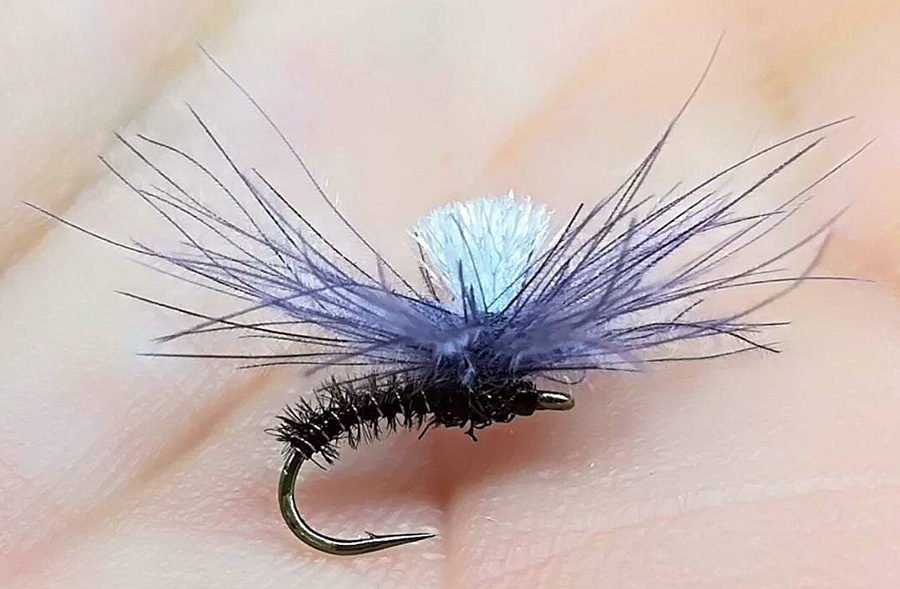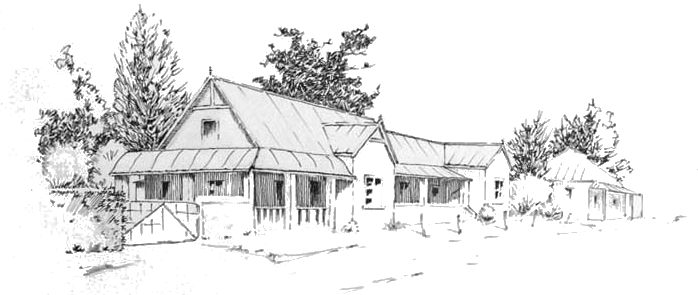Text and fly images by Gordon van der Spuy. Other images per Tourette Fishing.
*
Crossing the border from Ficksburg into Lesotho is an attack on the senses, literally and figuratively. It’s hard to imagine that you’re only a hundred meters from South Africa. The first thing that hits you is the most foreign sounding music and noises you’ve ever heard. It comprises of loud, ear-numbing drumming, even louder strumming, and a hell of a lot of screaming and chanting. It wakes you up and you immediately get the feeling that you’ve entered a foreign country, which you have.
Lesotho might be in close proximity to South Africa, but that’s where the common ground ends. The country is unique on many levels. I don’t think there is a single straight road in Lesotho, for example. It took us four hours to get to Katse Dam from the border, incredible when you consider that it is only 90km away. The roads are good too, the slow pace of the journey being accredited to numerous hairpin bends and steep climbs that our poor vehicles had to handle. It really is the Mountain Kingdom.
We’d come all this way to fish the Bokong River. The river is managed by Tourette Fishing who have established a world-class operation on the river. The camp optimises the Bauhaus concept of form following function, every minute detail has been thought of. The camp is comfortable, beautiful and stylishly rustic.
Click in images to enlarge them
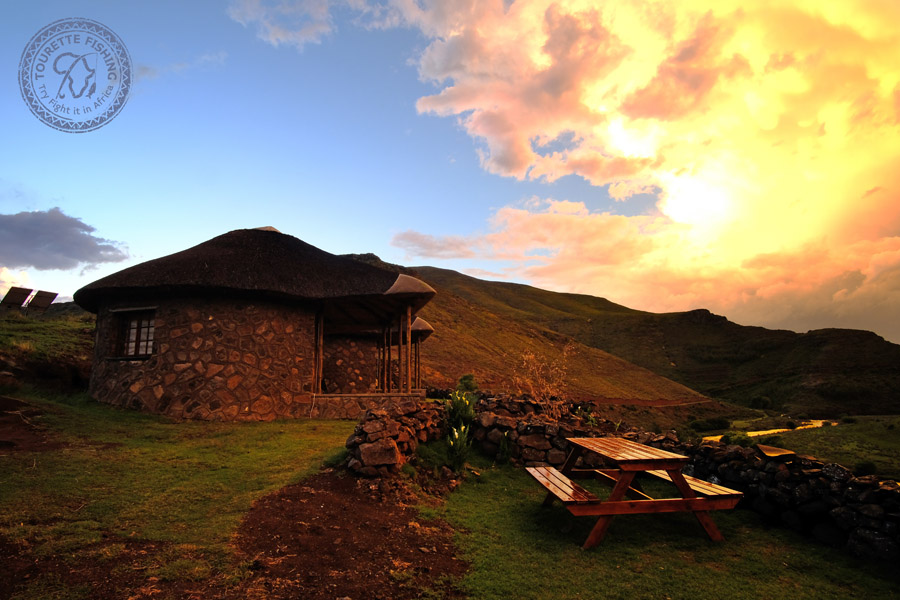
The camp
Johan du Preez and Brent Poultney were our guides during our stay and not only guided us in to some excellent fish, but also baked fresh bread every day, braaied the thickest juiciest chops I’ve ever tasted, made excellent Nutella pudding and were downright decent people. The camp staff are just as good and comprise various members of the community who have, through the project, gained employment. The Bokong project is a community beneficiation project that aims to uplift the community through education and job creation. The aim of the partnership is to provide sustainable and beneficial tourism to the area, while conserving the natural resources which attract anglers to this beautiful valley. Management is key when it comes to sustaining a resource and Tourette fishing to my mind have the concept of successful fishery management well waxed.
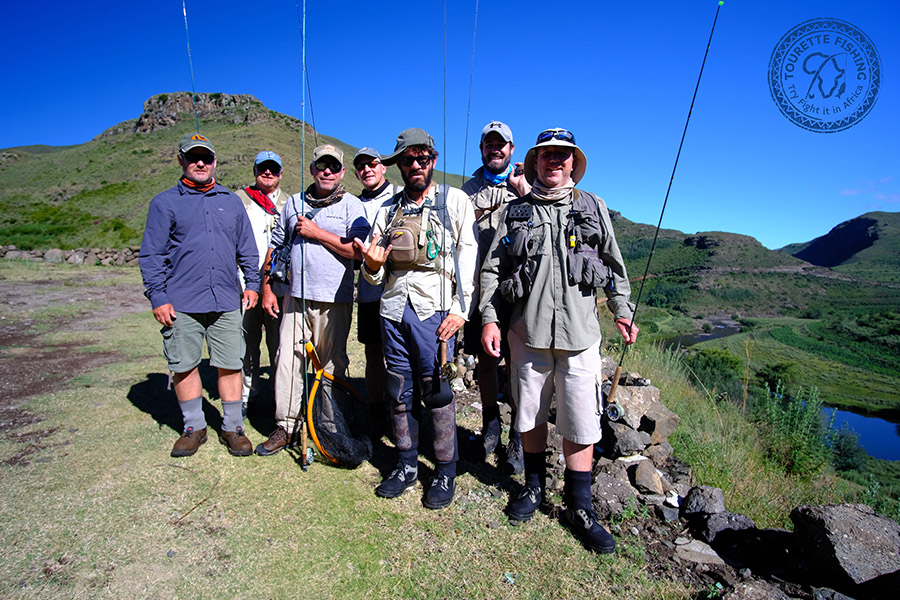
The team left to right: Peter Schulenberg, Piers Westerman, Simon Graham, Graeme Pitt, the author, James Leach and Trevor Freestone.
This was my maiden hosted trip. I’d miraculously managed to convince some people to come fishing with me. Trevor and Peter were from Polokwane, Simon and Graeme came from Natal, James and I drove up from Cape town and Pierce flew in all the way from Tuscany. Months before the trip I had set up a whattsapp group to help get us all orientated. I had been in regular comms with Johan du Preez who had been guiding me as what to expect and what flies to tie. I, in turn, would relay this info to the group with the added benefits of detailed tying instructions for patterns, guide reports etc. The preparation for such a journey is to my mind an essential part of the trip. Call it piscatorial foreplay if you will.
What had brought us to the Bokong was the many tales we had heard of the hard fighting, dry-fly smashing yellows of the river. Every season sees a mass migration of yellows into the system. I guess one could compare it to the wildebeest migration of the Serengeti. The river literally teems with fish. It’s not uncommon to see upward of a hundred fish in a pool or run.
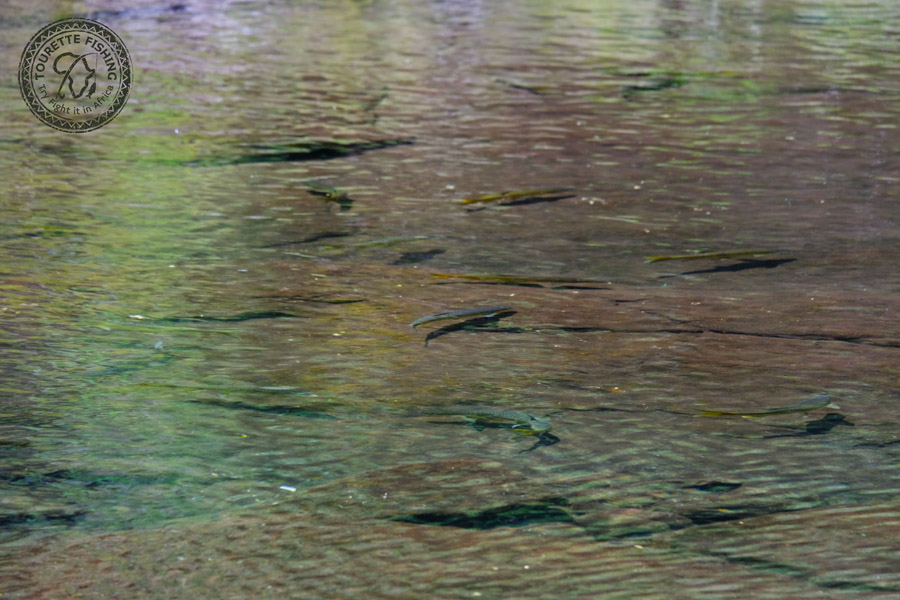
A mass migration of yellows into the system
One would think that the fishing would be easy, but these yellows can be downright difficult at times as we were to find out after our first day. Fish were stacked in deep pools and were really not that keen to come to the dry. At one stage I resorted to fishing a dry and dropper rig, but did so rather half-heartedly. I had two fish to show for the morning, one caught on a dry and one on a small nymph. The guys fishing nymphs deep did considerably better. I guess being able to adapt is key to success. I had fished the dries hard. I had come to the Bokong to catch yellows on a dry fly. I felt dejected.
Pierce Westerman suggested a change in attitude, “ There is no point in willing yourself to fail”, he said, “ If you’re going to fish the nymph you need to love the nymph”.
So that afternoon I decided to change my attitude. When water temperatures drop on the Bokong so do the yellows and when in Rome, well you know how the saying goes. Some colder water had entered the system the day before and this had caused the yellows to sulk somewhat. That afternoon I fished the nymph like I’d never fished a nymph before. I actually focussed and decided to keep an open mind about this whole nymphing thing. The experience was life changing, with numerous plump golden yellows coming to hand. The afternoon session was in direct contrast to the morning session, where I couldn’t seem to move a fish. Now they seemed to rain down on me. I walked into camp that evening feeling a lot better. Johan just laughed. “ What was that you said earlier about not giving in to the nymph”, he laughed.
Peter Schulenberg , the doctor in our group, decided that a nice stiff drink was in order. ”Spade”, I’m happy you fished a nymph’, he announced, “ It’s about time”. Taking that drink from Peter was a mistake as Peter is very liberal in his pouring methods. I was reciting Hamlet and singing from Handels messiah within the hour. If you ever end up on a fishing trip with this mad man from Polokwane refrain from taking drinks from him! Don’t say you weren’t warned!
Most of us felt like death warmed up the next morning. Count on the groups doctor to get us all feeling sick! Simon and Graeme were looking green around the gills. The only one smiling was that Judas from Polokwane.
Then Johan announced that we’d be doing a nice brisk walk up the mountainside to fish the upper beats of the Bokong. By the time we reached the plca he had in mind, called ‘ Skate Park’, 6km away, I felt somewhat weak in the knees, so I did what anyone in my position would have done. I took it easy. I simply sat there just taking it all in.
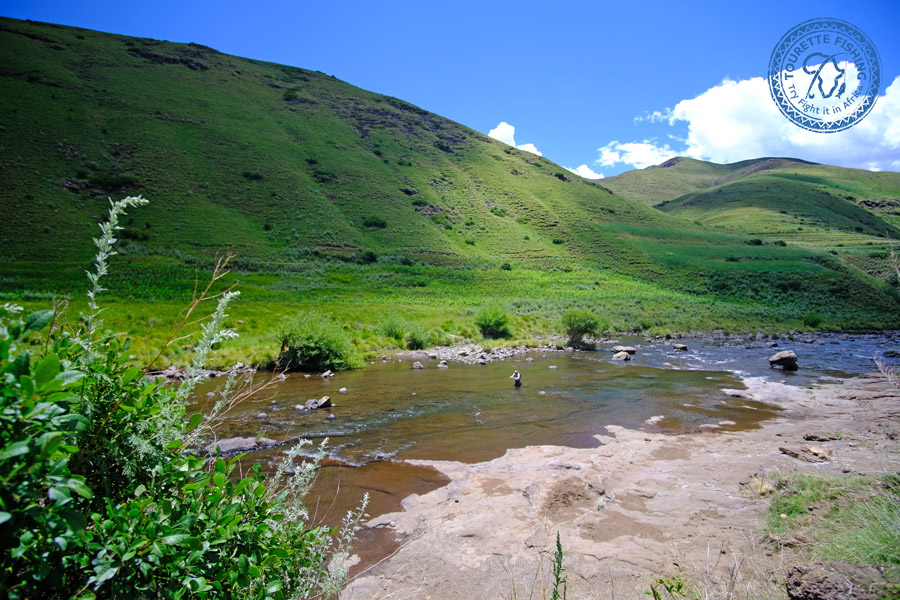
Skate Park
My thoughts were interrupted by a pod of fish moving into sight. They were in super shallow water in a tail-out. I made a soft presentation with a Humpy variation I’d been playing with.
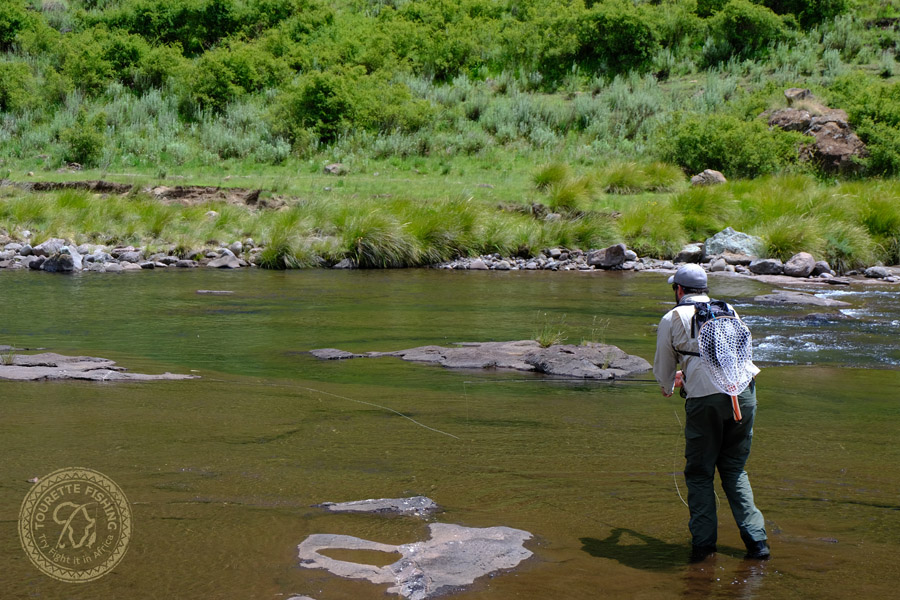
They were in super shallow water in a tail-out.
The fly is basically a Humpy that replaces the elk with klipspringer and that includes a bit of CDC amongst the hackle. These additions render the fly more buggy and less clinical in my opinion. Standard humpies sometimes have the tendency to look a little like floating hospital beds.
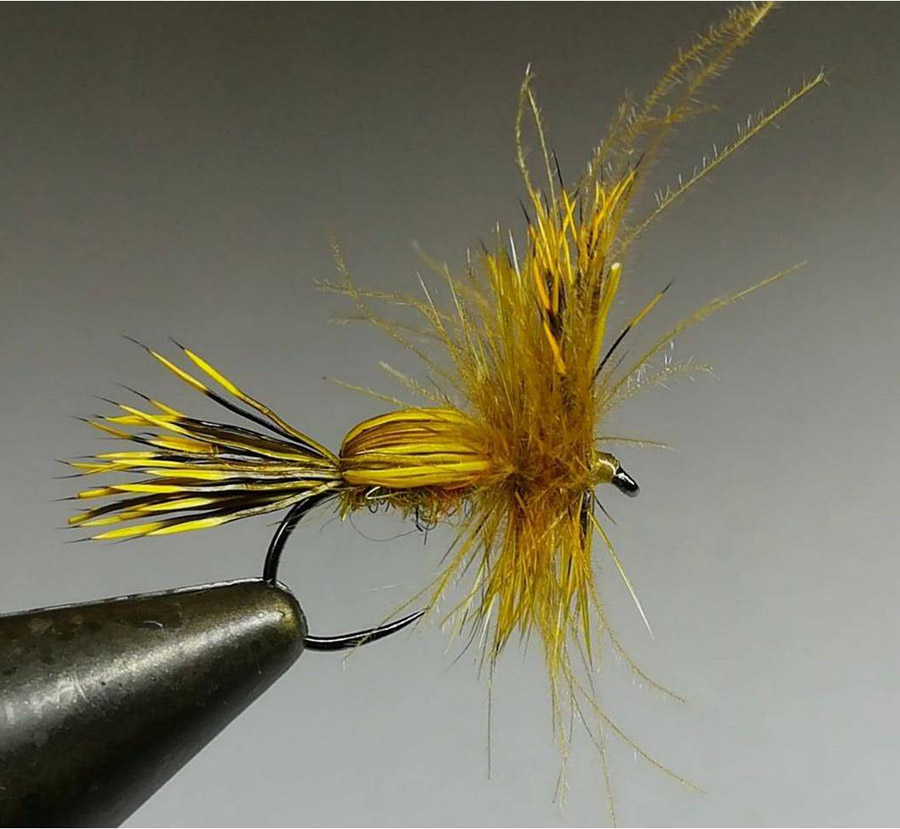
My Humpy variation – a 'Klumpy', maybe?
The fly was eaten on the first cast. If you find fish holding in shallower water on the Bokong a dry fly works very well. I guess fish don’t mind coming to a fly if they don’t need to move too far for it. The Humpy did very well. Bokong yellows are very forgiving and recover quickly after being spooked. One would think that a fish screaming upstream through the pod would scare the living daylights out of them. Sure, the fish scatter, but after 5 minutes they’re back to their business. It’s quiet amazing really. One would never be able to do that kind of the thing on the Elandspad for example. Yellows are also a lot more fidgety than trout. They move around a lot. A good tactic with them is to put yourself in a prime spot and then just wait for fish to swim within range of you. This tactic is deadly.
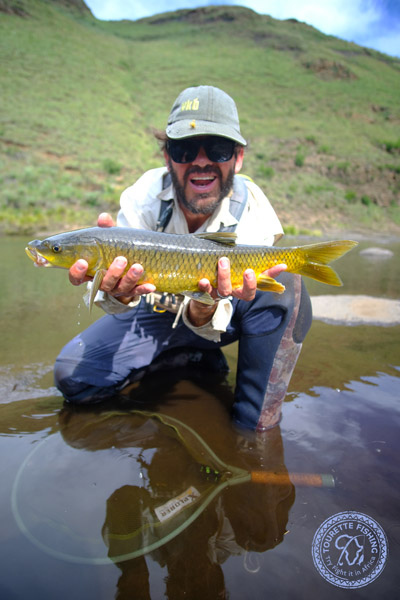
The author with a lovely Bokong yellowfish
In the evenings the fish in bigger slower pools start moving to midges. They lock onto these little creatures to the exclusion of everything else. Johan and Ed had warned me about this before our arrival and suggested I tie up some super tiny black CDC Klinkhamers. It’s amazing how fish turned on to this little fly in the right conditions. I sat in the tail of a pool one evening and caught fish after fish on these little flies. It reminded me of fishing midges in stillwaters. Except here I was catching plump yellows that pulled like hell.
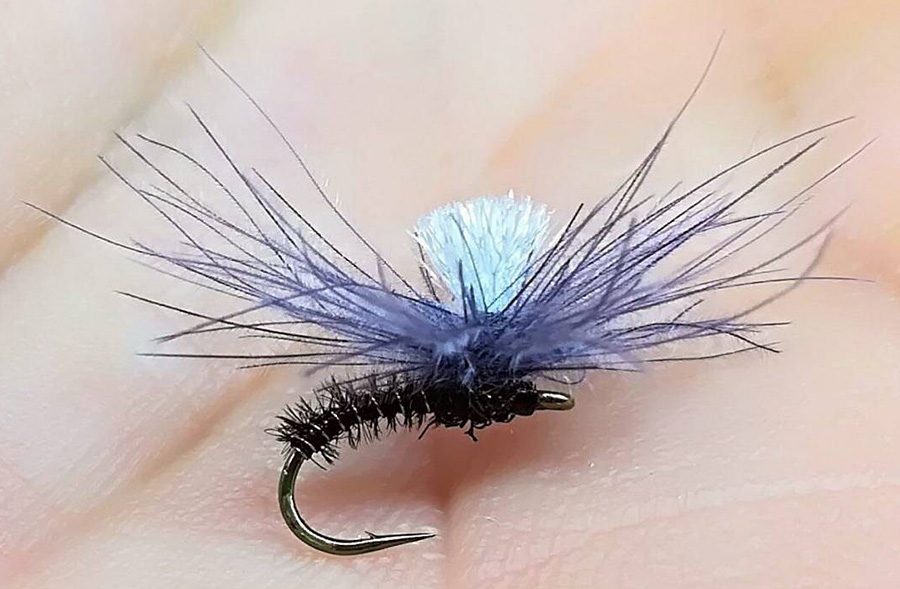
My CDC Klinkhamer Midge
I can carry on. I don’t know how many fish we caught over the four days we were there. I can’t tell you, because keeping count is pointless. Fish seemed to merge into each other. The one fish I remember catching was a big hen I had taken on a fat DDD on afternoon of our arrival.
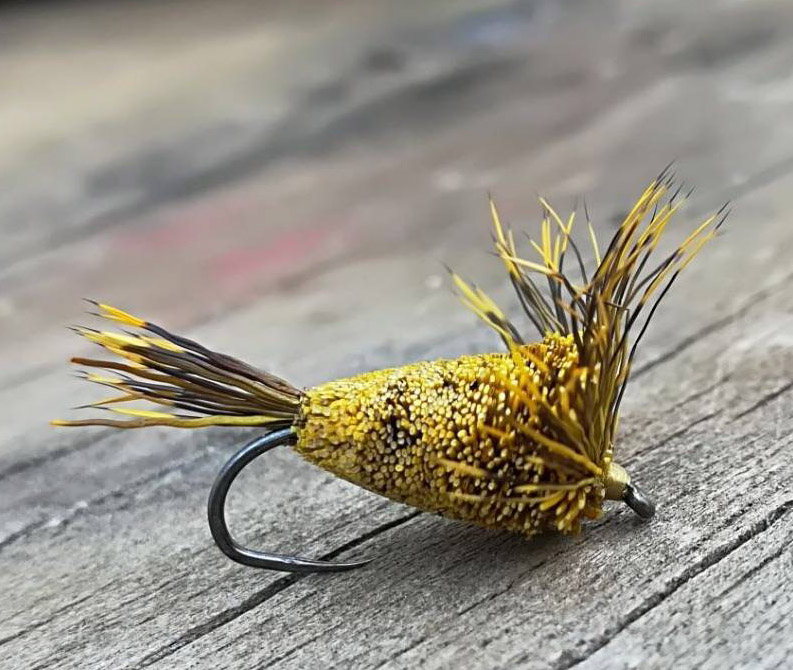
My fat DDD
That fish fought well, I’m surprised I landed her. I’d cast to her for a while, I’d probably drifted that DDD over her ten times. Eventually I changed to a dry and dropper rig in the hope that she’d eat the nymph. First cast with the set up and she eats the dry. Woman! They’re beautiful but I’ll never understand them.
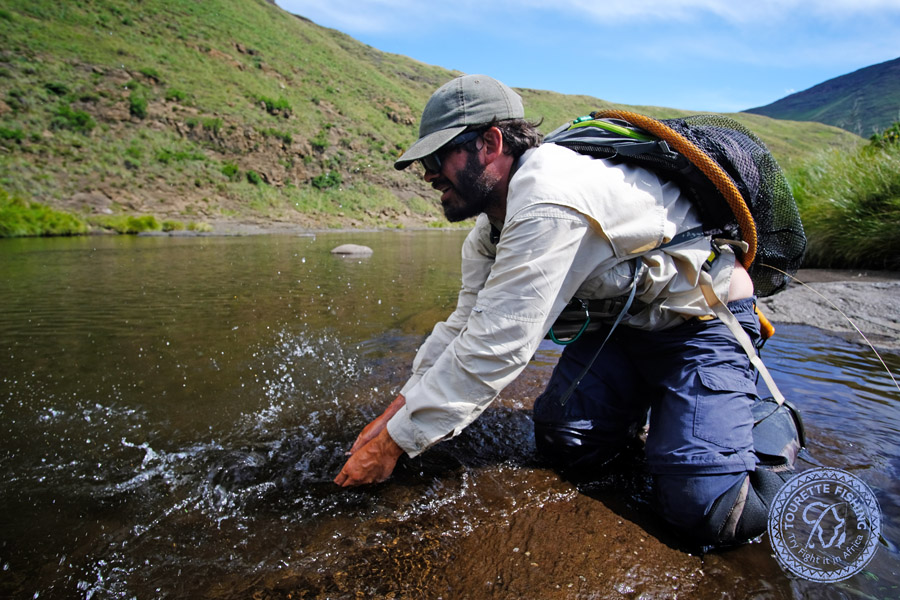
The author releasing a yellowfish
Look, we caught fish in every conceivable type of water on a wide range of methods. We not only caught fish, but we’d learnt a hell of a lot in the process. What I did find was that yellows in thinner, slower water were very keen on my little foam-bodied ant pattern. It worked a treat.
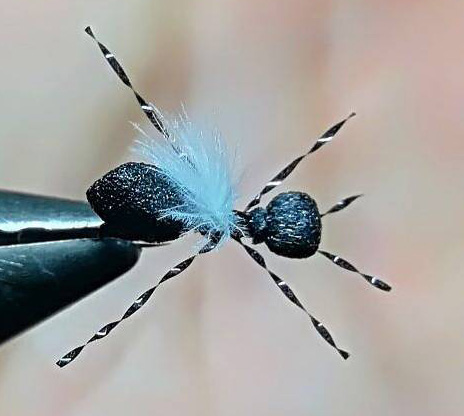
Foam-bodied ant pattern
By the time we left the Bokong we were tired, broken and happy. Everyone in our group, Simon, Graeme, Peter, Trevor, James and Pierce vowed that they’d be back. I can’t say I was surprised. The Bokong is that kind of place. It’s magical .
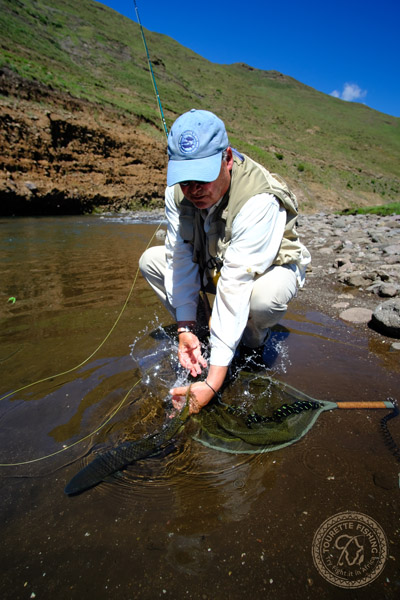
Piers Westerman releases a yellow.
Half way back to Cape town James turned to me with a smirk on his face and dryly said, “ You’re thinking about it aren’t you?”.
“ Ja, I am, aren’t you?”, I replied
We both just laughed.
*
Note: Gordon has booked two trips to the Bokong for 2019.
The dates are : 17-21 January 2019 and 21-25 January 2019. With a maximum party size of 5 per trip to ensure a quality experience. For more information on these trips or to book a spot on one of these life changing experiences please email Gordon on This email address is being protected from spambots. You need JavaScript enabled to view it.">This email address is being protected from spambots. You need JavaScript enabled to view it.

